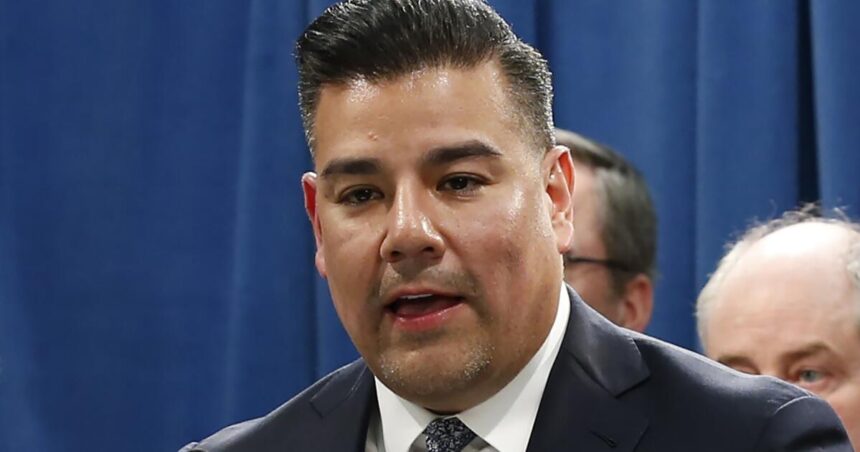Bruce Breslau has lived in a Chatsworth condominium since 2009, and says he and his partner paid $1,200 in fees last year to insure the 290-unit townhouse complex against fire and other disasters.
That was before Breslau’s western California housing development was dropped by Farmers Insurance, forcing the homeowners’ committee to search the globe for a replacement for a Los Angeles insurer that was providing $92 million worth of coverage for about $350,000 annually, Breslau said.
Through a patchwork assortment of insurers, including Lloyd’s of London, the complex is still insured, but total costs have risen to $1.7 million for just $50 million in coverage, he said. As part of the new agreement, homeowners must pay an extra $4,700 in special annual assessments.
“When this was announced at the board meeting, some people in this community lost their minds. They panicked,” said Breslau, 71, who is still working and therefore better able to absorb the extra costs than others. “Where do you get that?”
Breslau was one of two homeowners who spoke at a news conference Tuesday morning on the steps of Los Angeles City Hall before a hearing held by the state Assembly Insurance Committee, where Insurance Commissioner Ricardo Lara testified about efforts to solve the state’s worsening homeowners insurance crisis.
The Chatsworth complex is just one of countless casualties of the crisis that has seen insurers pull out of the state or stop writing new policies amid mounting damage from wildfires blamed on climate change across California.
On Tuesday, firefighters continued to battle the Bridge Fire and the East Fork of the San Gabriel Valley, which has burned about 55,000 acres and damaged or destroyed more than 50 homes. The more destructive Airport Fire in Orange County’s Trabuco Valley had destroyed 120 homes as of Monday.
A Farmers spokesman declined to comment specifically about California West but said Farmers regularly reviews its financial exposures and “if we determine that risks no longer meet our underwriting guidelines, we notify customers that we can no longer provide coverage.”
The press conference was organized by Consumer Watchdog, a prominent Los Angeles advocacy group that has criticized Lara’s reform proposals, which include several efforts to lower premiums and make it more attractive for insurers to reinstate fire insurance in California.
As wildfire losses accelerate, a key part of the strategy is to allow insurers to use complex computer models — what advocacy groups call “black boxes” — that simulate likely fire losses when calculating premiums, rather than relying on past claims data.
In exchange for that concession, the state business community agreed to resume writing insurance policies in areas with high wildfire risk, using a formula that requires insurers to issue a certain number of policies based on the percentage of the market they control. Under the terms of this formula, if an insurer has 10% of the statewide market share, for example, it would have to cover at least 8.5% of the homes in high-risk communities.
Consumer Watchdog argues that the department’s recently issued final regulations don’t actually require insurers to meet that percentage, instead allowing them to meet lower targets or even devise their own plans to improve coverage.
Lara also plans to allow, for the first time, insurers to include in the cost of homeowners premiums the reinsurance they buy from large companies to protect their own bottom lines against catastrophes.
Consumer Watchdog said the changes are a boon to the industry that will lead to higher premiums without improving coverage. It suggests insurers should offer insurance to homeowners and businesses that take steps to reduce the risk of fire on their premises.
“Insurance Commissioner Lara is doing worse than sleeping with the switch on. He’s making deals with insurance companies in back rooms,” the group’s chairman Jamie Court said at the event on Tuesday.
During the hearing, Lara defended his plan, saying his sustainable insurance strategy represents the biggest reform to the industry since Proposition 103, which created an elected insurance commissioner with the power to review, reduce or reject insurers’ requests for rate hikes, was passed in 1988. Consumer Watchdog founder Harvey Rosenfield is the proposal’s author.
Lara said his plan is to update decades-old regulations based on the proposal, and that his department is hiring more staff and consultants to finalize the new rules.
“I am proud of the great progress we have made over the past year toward meeting my December 2024 deadline to implement ambitious reforms aimed at stabilizing the state’s insurance market,” he told the committee.
Lara also announced during the hearing that the agency will develop a public computer model that insurers, local communities and other stakeholders can use to calculate potential wildfire losses.
But he cautioned that the model would take years to develop and that insurers would be allowed to set rates using their own algorithms, which would be reviewed by the department’s regulators. “This is not a quick fix or a simple solution,” he said.
He also criticized Consumer Watchdog as an “entrenched interest” that benefits from intervening in insurers’ rate filings to raise rates. Under Proposition 103, the group can bill for the time it spends on such cases as a so-called intervener.
Lara claims the group made nearly $10 million over several decades, and that consumers ultimately paid the price.Consumer Watchdog claims it intervened for 22 years to fight excessively high interest rates on home, auto and other insurance premiums.
Rex Frazier, president of the California Personal Insurance Coalition, a trade group for property and casualty insurers, responded to Consumer Watchdog’s criticism of Lara’s plan by saying, “We need adults involved, not groups that are only interested in making money when the problem is unresolved.”









